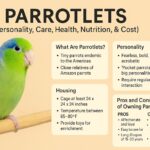Golden Retrievers consistently rank among the most popular dog breeds worldwide, and for good reason. These beautiful, intelligent dogs have captured the hearts of families across the United States, the United Kingdom, Europe, Australia, and Canada for decades.
From their fascinating Scottish origins to their gentle temperament that makes them perfect family companions, Golden Retrievers offer a unique combination of beauty, intelligence, and loyalty that few breeds can match.
This comprehensive guide explores everything you need to know about Golden Retrievers, from their surprising history to their health considerations, helping current and prospective owners understand what makes these dogs so special.
History Behind Golden Retrievers
The story of how Golden Retrievers came to be is both fascinating and somewhat accidental. In 1865, Sir Dudley Coutts Marjoribanks was walking through Brighton, England, with his son when he encountered something unusual: a yellow sporting dog named Nous.
This wasn’t just any ordinary dog encounter. Nous was the only yellow puppy in an entire litter of black Wavy-Coated Retrievers, owned by a local cobbler who repaired shoes.
During this time period, the British elite believed that black dogs were superior hunters, which meant lighter-colored dogs were often considered undesirable and frequently disposed of. Nous was fortunate to be alive, but his luck was about to change dramatically.
Marjoribanks, who would later become Lord Tweedmouth, recognized something special in this unusual yellow dog and brought him back to his estate in Guisachan, Scotland.
Three years later, in 1868, the foundation of the Golden Retriever breed was laid when Nous was bred with Belle, a female Tweed Water Spaniel1. This historic mating produced four puppies, marking the beginning of what would become one of the world’s most beloved dog breeds.
The Golden Retriever was developed through careful breeding practices that included crossing Flat-coated Retrievers with Tweed Water Spaniels and other British dog breeds.
Lord Tweedmouth had a specific purpose in mind when developing this new breed. Like many British gentlemen of his social standing, he was passionate about creating the perfect hunting dog.
His hunting grounds in Scotland featured marshes, ponds, and streams, requiring a dog that could retrieve game both on land and in water. Additionally, as firearms technology advanced, retrieving birds across this varied landscape became increasingly challenging, making the need for a versatile retriever even more important.
Physical Characteristics and Breed Standards
Understanding the physical characteristics of Golden Retrievers helps potential owners know what to expect and ensures proper care throughout the dog’s life. According to the American Kennel Club breed standard, Golden Retrievers should present as symmetrical, powerful, and active dogs that are sound and well-constructed. They should display a kindly expression and possess a personality that is eager, alert, and self-confident.
Size specifications are quite specific for this breed. Male Golden Retrievers typically stand 23 to 24 inches in height at the withers, while females are slightly smaller at 21.5 to 22.5 inches. Weight ranges are equally important, with male dogs weighing between 65 to 75 pounds and females weighing 55 to 65 pounds.
These measurements ensure that Golden Retrievers maintain their athletic ability while possessing the strength needed for their original hunting purposes.
The breed standard emphasizes that Golden Retrievers should maintain a length from breastbone to point of buttocks that is slightly greater than their height at withers, following a ratio of 12:11.
This proportion contributes to their athletic appearance and functional capabilities. Any deviation in height of more than one inch from the standard results in disqualification from conformation shows.
The head structure of Golden Retrievers is particularly distinctive. They should have a broad skull that is slightly arched both laterally and longitudinally, without prominent frontal or occipital bones.
The stop should be well-defined but not abrupt, and the foreface should be deep and wide, nearly as long as the skull. Their eyes are especially important for breed character, requiring a friendly and intelligent expression with medium-large size and dark, close-fitting rims. Eye color should preferably be dark brown, though medium brown is acceptable.
Temperament and Personality: What Makes Golden Retrievers Special
Golden Retrievers are renowned for their exceptional temperament, which combines intelligence, gentleness, and affection in a way that makes them ideal family companions. The breed is considered intelligent, gentle-natured, and very affectionate, displaying characteristics typical of retriever breeds, including calmness and biddability. This makes them extremely easy to train and exceptionally eager to please their owners.
One of the most appealing aspects of Golden Retrievers is their relationship with children and families. The breed is known for making excellent pets and family dogs, being generally extremely tolerant of children and eager to accompany any family member in various activities. Their affable nature often means they are completely devoid of guarding instincts, though this can vary between individual dogs.
Golden Retrievers from Australia and other regions exhibit friendly and tolerant attitudes, making them outgoing, trustworthy, and eager to please. Their intelligence shines through in their ability to quickly grasp commands and adapt to various situations. This gentle demeanor makes them excellent companions for families with children, as they demonstrate patience and love consistently.
Despite their friendly nature, Golden Retrievers can serve as moderate watchdogs. While they may not be as vocal or assertive as some other breeds, their loyalty and protective instincts toward their family can lead them to alert owners to unusual activity or visitors. This balanced approach to protection makes them suitable for families seeking a gentle dog that can still provide some security awareness.
The breed typically retains many of their gundog traits and instincts, including an excellent sense of smell and a strong instinct to retrieve. Even among those not trained as gundogs, it is typical for Golden Retrievers to present their owners with toys or other objects.
Compared to other retriever breeds, Golden Retrievers are typically quite slow to mature, which owners should consider when planning training and development activities.
Puppy Development and Growth Stages
Understanding Golden Retriever puppy development helps owners provide appropriate care and set realistic expectations throughout their dog’s growth. The early weeks of a Golden Retriever’s life involve rapid and dramatic changes that require careful attention and proper care.
During the first week of life, Golden Retriever puppies are completely dependent on their mother. As their eyes begin to open toward the end of this week, owners witness the first glimpses of their curious personalities emerging. This delicate phase demands careful observation and nurturing to lay the foundation for a healthy and happy future.
The second and third weeks bring remarkable transformations. Puppies undergo rapid growth, with their weight doubling or even tripling to reach around 3 to 5 pounds. Their eyes and ears fully open during this period, granting them a broader sensory experience of the world around them.
Puppies start to wobble around on unsteady legs, attempting their first wobbly steps, which provides a heartwarming sight for dog owners. During this stage, it becomes crucial to introduce soft puppy food mash to supplement the mother’s milk, helping with the transition to solid food.
Between four and six weeks old, Golden Retriever puppies enter a vibrant period of exploration and growth. Their weight continues to surge, reaching around 8 to 12 pounds, reflecting the dynamic development occurring at this stage.
Mobility takes a significant leap, and owners witness these curious pups engaging in playful antics while testing their agility and social skills. Providing a stimulating environment with age-appropriate toys becomes essential to encourage both physical and mental activity.
The seven to ten week phase brings significant strides in both size and behavior. Weighing between 12 and 20 pounds, puppies become more coordinated, showcasing enhanced motor skills and agility.
Playful energy becomes abundant, and socialization remains crucial during this period. Owners can focus on consistent obedience training, introducing basic commands, and reinforcing positive behaviors. This period often marks the transition to their forever home, so providing a secure, loving environment with a cozy bed and designated play areas becomes important.
At twelve weeks and beyond, Golden Retrievers enter what could be considered early adolescence. Puppies at this age are likely to have been rehomed away from their littermates and mother, which can result in some separation anxiety.
Understanding this transition period helps owners provide appropriate support and patience as their new family member adjusts to their permanent home.
Health Considerations for Golden Retriever Owners
While Golden Retrievers are generally healthy dogs, like all breeds, they are prone to certain health issues that owners should understand and monitor. Being aware of these potential problems allows for early detection and treatment, ultimately improving the quality of life for these beloved companions.
Hip dysplasia represents one of the most common health issues affecting Golden Retrievers. This condition occurs when the hip joint doesn’t fit together properly, leading to pain and discomfort for the affected dog.
According to veterinary specialists, hip dysplasia is particularly common in larger breeds like Golden Retrievers. Owners should watch for symptoms such as limping or difficulty getting up, and address the issue early to prevent further complications.
Cancer poses another significant health concern for Golden Retrievers. Research indicates that Golden Retrievers have a higher risk of developing cancer compared to many other breeds. Veterinary oncologists emphasize the importance of being proactive about health monitoring and scheduling regular check-ups to catch any issues in their early stages. Some of the most common types of cancer affecting Golden Retrievers include lymphoma and hemangiosarcoma.
Regular veterinary care becomes particularly important for Golden Retriever owners due to these breed-specific health risks. Establishing a relationship with a trusted veterinarian and maintaining consistent check-up schedules can help identify potential problems before they become serious.
Additionally, maintaining a healthy weight through proper diet and exercise can help reduce the risk of developing joint problems and other health issues.
Preventive care measures include keeping up with vaccinations, heartworm prevention, and dental care. Golden Retrievers’ friendly nature often means they are exposed to many other dogs and environments, making proper vaccination schedules particularly important.
Their love of water and outdoor activities also increases exposure to parasites and other environmental health risks that require ongoing prevention efforts.
Living with Golden Retrievers: Exercise, Training, and Daily Care
Golden Retrievers require substantial exercise and mental stimulation to maintain their physical and emotional well-being. Their heritage as hunting dogs means they possess high energy levels and strong working instincts that need appropriate outlets. Daily exercise should include both physical activity and mental challenges to keep these intelligent dogs satisfied and well-behaved.
Training Golden Retrievers is generally a rewarding experience due to their eager-to-please nature and high intelligence. Their natural desire to retrieve makes them excellent candidates for fetch games, which provide both exercise and mental stimulation.
However, their slow maturation rate means owners should be patient with training progress and maintain consistent, positive reinforcement methods throughout their development.
Grooming requirements for Golden Retrievers are significant due to their beautiful double coat. Regular brushing helps manage shedding and prevents matting, while also providing an opportunity to check for any skin issues or abnormalities. During shedding seasons, daily brushing may be necessary to keep both the dog and home comfortable.
Conclusion
Golden Retrievers have earned their place as one of the world’s most beloved dog breeds through a combination of intelligence, gentle temperament, and unwavering loyalty. From their accidental origins in 19th-century Scotland to their current status as cherished family members across the globe, these remarkable dogs continue to bring joy and companionship to millions of households.
Understanding the breed’s history, physical characteristics, temperament, development stages, and health considerations helps current and prospective owners provide the best possible care for their Golden Retriever companions.
While they require significant exercise, grooming, and health monitoring, the rewards of sharing your life with a Golden Retriever far outweigh the responsibilities.
For families in the United States, the United Kingdom, Europe, Australia, and Canada considering adding a Golden Retriever to their household, these dogs offer an unmatched combination of loyalty, intelligence, and affection.
With proper care, training, and attention to their health needs, Golden Retrievers can provide many years of faithful companionship and countless precious memories.
Their gentle nature with children, adaptability to various living situations, and genuine desire to please make them an excellent choice for families seeking a devoted four-legged friend.
Whether you’re drawn to their beautiful golden coat, impressed by their intelligence, or attracted to their gentle demeanor, Golden Retrievers represent everything wonderful about the human-canine bond.
These remarkable dogs have spent over 150 years perfecting the art of being the perfect family companion, and they show no signs of relinquishing that title anytime soon.
- Parrotlets (Personality, Care, Health, Nutrition, & Cost) - June 20, 2025
- Caique (Personality, Care, Health, & Nutrition) - June 20, 2025
- The Complete Guide to Golden Retrievers - June 9, 2025















